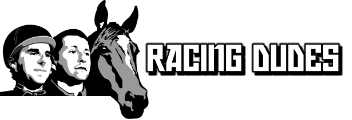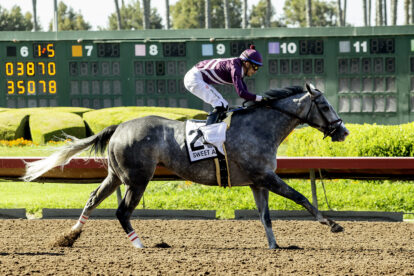Horse racing is one of the most exciting betting markets around. The speed, the unpredictability, and the depth of strategy draw in everyone from casual fans to serious handicappers. But before you can start spotting opportunities, you need to know how to read the numbers! Odds aren’t just there to tell you how much you’ll win; they reveal how the betting market views a race.
This guide walks through the essentials of horse racing odds, how to calculate what they mean, and ways to apply them to your handicapping.
What Odds Actually Represent
When you see odds on a race card or betting screen, two ideas are being communicated:
- Probability – The horse’s chance of winning, according to the sportsbook or track.
- Payout – How much you’ll collect if the bet lands.
A horse at 6-1 suggests a $1 bet will return $6 profit plus your stake. But behind that number sits an implied probability: the bookmaker’s view of the horse’s chance of winning. The odds are never just about payouts; they’re also an indicator of how the market values each runner.
Understanding Different Odds Formats
Odds can appear in a few formats depending on where you’re betting. If you only stick to one track, you may always see fractional odds. Online, especially if you’re using platforms like Sportsbet, you’ll notice more variety.
Fractional Odds
The traditional format in the US. Written as something like 7-2 or 10-1, they show profit relative to stake. A $2 bet at 10-1 returns $20 profit plus your $2 back.
Decimal Odds
Common internationally. A clean, easy way to see the total return including your stake. Odds of 4.50 mean $1 turns into $4.50.
Moneyline Odds
More familiar in other US sports. A positive number (+400) shows how much profit a $100 bet would win. A negative number (-150) tells you how much you must stake to win $100.
If you can read all three styles, you’ll never be caught off guard when switching between racecards, apps, or betting platforms.
The Idea of Implied Probability
The most important concept behind odds is probability. Every set of odds can be converted into a percentage chance.
For fractional odds, the formula is: Probability = denominator ÷ (numerator + denominator)
So a horse at 4-1 translates to 1 ÷ (4+1) = 20%. The book is saying the horse has a one-in-five shot of winning.
Why is this useful? Because you can compare the market’s view to your own handicapping. If your analysis gives the horse a 30% chance, but the odds suggest only 20%, that’s value. It doesn’t guarantee a win, but it means the price is in your favor.
Morning Line vs Final Odds
Handicappers need to understand the difference between the “morning line” and the final odds you see at post time.
Morning line – Set before betting opens, by the track’s oddsmaker. It’s a prediction, not a final price.
Final odds – Reflect the money actually wagered. They can swing dramatically depending on how the public bets.
A horse listed at 12-1 in the morning line might close at 6-1 if bettors flood in. Watching these movements tells you a lot about market confidence, and it can sometimes confirm or challenge your own read on the race.
Types of Horses by Odds
When you look down a race card, odds give you an instant picture of the field:
- Heavy favorites – Horses at 2-1 or shorter. Strong chances, smaller payouts.
- Mid-range contenders – Often 5-1 through 12-1. These are where value bets often live.
- True longshots – 20-1 or higher. Unlikely winners, but capable of massive payouts.
The sweet spot for many bettors is the mid-range. Favorites win often, but the returns rarely justify constant betting. Longshots are fun, but bankrolls vanish quickly if you’re chasing them. The middle ground is where you’ll often find the best balance of price and probability.
How Odds Tie Into Bet Types
Odds don’t just affect win bets. They shape the payouts across every wager.
Straight bets
- Win – Horse must finish first.
- Place – First or second.
- Show – Top three.
The lower the odds, the less sense it makes to play show or place, because the payout might barely move the needle.
Exotics
- Exacta – First two finishers in order.
- Trifecta – First three in order.
- Superfecta – First four in order.
- Daily double, pick 3, pick 4 – Covering multiple races.
Here, the odds interact with the betting pools. Longshots landing in an exotic often trigger huge payouts, because few bettors include them.
Strategies for Using Odds
Here’s how experienced handicappers use odds as more than just a payout guide:
Compare the implied probability to your own numbers. If the gap is wide, that’s value.
Pay attention to movement. A horse drifting from 5-1 to 12-1 may signal lack of confidence, while one dropping sharply in price could be seeing strong support.
Don’t skip the mid-range. Many profitable bettors focus here because the balance between price and chance makes sense.
Consider bankroll strategy. It’s tempting to bet small amounts on several longshots, but consistently backing reasonable odds can produce steadier returns.
Odds aren’t the only factor. Form, track conditions, jockeys, and pace all matter. But odds tell you how the rest of the world sees the race.
Online Betting and Odds Tracking
Betting online has made tracking odds easier than ever. Sites offering horse racing markets will update in real time as money comes in. That means you can watch shifts and decide whether to bet early, wait for a price change, or avoid races where the odds don’t match your expectations.
The flexibility online betting gives you is huge. You can switch between formats, monitor exotic pools, and keep an eye on multiple races at once without leaving your screen. For handicappers who want to spot value quickly, that’s a big advantage.
Pitfalls Bettors Should Watch Out For
Even if you understand odds, there are common mistakes that drain bankrolls:
- Betting longshots for the thrill of the payout, rather than the probability.
- Forgetting about takeout, which is the portion of the pool the track or the sportsbook keeps. This affects returns more than most new bettors realize.
- Betting every single race. Odds can guide you, but not every race presents a worthwhile opportunity.
- Ignoring late shifts in odds. A horse drifting up or down in the minutes before the off can tell you plenty about smart money entering the pool.
- Locking in too early or too late without watching how the field changes.
Avoiding these traps keeps you focused on value, not just excitement.
Enjoying the Thrill of Betting on Horse Racing
Odds are more than payout math. They’re the market’s opinion, the bookmaker’s calculation, and the public’s betting behavior rolled into one number. Once you understand how to interpret them and how to compare them with your own handicapping, you move from guessing to making informed, strategic decisions.
The next time you’re studying a race, look past the surface. Ask yourself: what probability do these odds imply, and does that match my view of the race? That’s the moment when odds stop being numbers on a page and start becoming a real tool for smarter betting.


